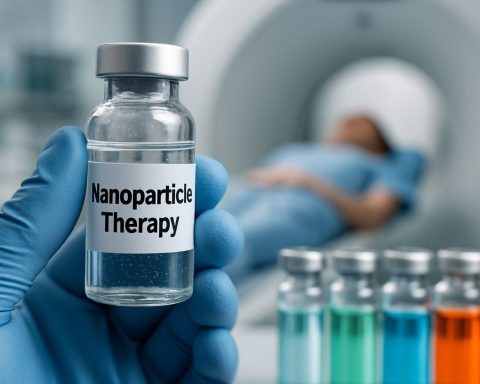- Diabetic neuropathy affects 28% to 55% of diabetes patients, with current treatments offering limited relief and side effects.
- MIRA Pharmaceuticals’ Ketamir-2, an oral ketamine analog, shows promise in reducing neuropathic pain in diabetic rats.
- Ketamir-2 avoids psychedelic effects, is non-addictive, and effectively crosses the blood-brain barrier.
- MIRA is developing a topical slow-release version to enhance targeted pain relief.
- Phase 2a trials for Ketamir-2 are expected to start in late 2025, with initial human efficacy data anticipated by mid-2026.
- MIRA’s acquisition of SKNY Pharmaceuticals paves the way for innovations in weight loss and smoking cessation therapies.
- Ketamir-2 represents a potential breakthrough in non-opioid therapies for managing pain.
Every day, millions of diabetes patients grapple with a relentless adversary—diabetic neuropathy. This condition proves as insidious as it is painful, affecting anywhere from 28% to 55% of those living with diabetes. Existing treatments, from pregabalin to duloxetine, offer only modest respite and often come shackled with a litany of side effects, leaving a significant number of sufferers yearning for more effective solutions.
Amidst this challenging landscape, MIRA Pharmaceuticals offers a glimmer of hope. The biotechnology company recently unveiled compelling data on their novel oral ketamine analog, Ketamir-2, casting a hopeful spotlight on what might become a groundbreaking advancement in neuropathy treatment. During a meticulously designed study, researchers induced Type 2 diabetes in rats through a high-fat diet and low-dose Streptozotocin—a method both precise and predictive of human pathophysiology. Upon administering Ketamir-2, these animal subjects experienced a noteworthy reduction in neuropathic pain, with some reclaiming baseline sensitivity as though the claws of their condition were gently pried loose.
But what sets Ketamir-2 apart in a world crowded with therapeutics? Unlike its chemical cousin ketamine, known for its psychedelic trip through dissociative effects, Ketamir-2 deftly sidesteps these hallucinogenic journeys. Its unique formulation ensures robust passage through the blood-brain barrier without triggering the same mind-altering effects, avoiding the stigma and complications linked to its predecessor. Equally important is its non-addictive nature—a valuable characteristic in a time when the opioid crisis casts a long shadow over pain management.
Yet, the intrigue doesn’t end there. Beyond oral administration, MIRA is diligently shaping a topical slow-release formulation of Ketamir-2, aimed at delivering targeted relief where it’s needed most, all while minimizing systemic exposure. With the onset of Phase 2a trials projected for late 2025, anticipation builds around the first glimpses of human efficacy data by mid-2026. And as MIRA’s pipeline expands, their recent acquisition of SKNY Pharmaceuticals further bolsters their innovation arsenal, hinting at future possibilities in weight loss and smoking cessation therapies.
In our collective quest to alleviate the burdens of diabetic neuropathy, MIRA’s developments with Ketamir-2 inject a fresh vein of optimism. As both a revolutionary treatment candidate and a reflection of MIRA’s strategic vision, Ketamir-2 may well be poised to redefine not only how we manage pain but how we envision the future of non-opioid therapies. Such a prospect invites us to look forward with renewed vigor, confronting the complexities of neuropathic pain with courage, innovation, and, most crucially, hope.
Could Ketamir-2 Be the Future of Diabetic Neuropathy Treatment?
Understanding Diabetic Neuropathy and Current Challenges
Diabetic neuropathy, a common complication of diabetes, affects millions globally. With prevalence estimates ranging from 28% to 55% among diabetics, this condition causes pain, tingling, and loss of sensation, primarily in the feet and hands. Existing treatments such as pregabalin and duloxetine offer limited relief and often bring unwanted side effects like dizziness, weight gain, and fatigue, leaving patients yearning for more effective, safer solutions.
What is Ketamir-2?
MIRA Pharmaceuticals has recently garnered attention with Ketamir-2, a novel oral ketamine analog promising to revolutionize diabetic neuropathy treatment. Unlike traditional ketamine, Ketamir-2 has been designed to avoid psychedelic effects, ensuring its administration doesn’t result in hallucinations. This unique formulation allows it to effectively pass through the blood-brain barrier, offering pain relief without the risk of addiction—a critical consideration amidst the ongoing opioid crisis.
Key Features of Ketamir-2
– Effective Pain Relief: Preclinical trials demonstrate significant reduction in neuropathic pain in diabetic rat models.
– Non-Hallucinogenic: Unlike its predecessor, Ketamir-2 does not induce psychedelic experiences, making it more broadly acceptable.
– Non-Addictive: An important characteristic in an era mindful of addiction risks.
– Various Delivery Forms: Besides oral administration, a topical slow-release formulation is being developed for targeted relief.
Promising Research and Future Development
As anticipation builds, MIRA has scheduled Phase 2a human trials for late 2025, with efficacy data expected by mid-2026. The company’s recent acquisition of SKNY Pharmaceuticals points to plans for expanding into weight loss and smoking cessation therapies—potentially broadening the impact of Ketamir-2 beyond neuropathic pain management.
Real-World Use Cases and Potential Impact
– Pain Management: Offers hope for patients experiencing chronic neuropathic pain with few effective alternatives.
– Opioid Crisis Mitigation: Represents a non-addictive alternative, reducing dependency on opioids.
– Scalable Treatment Options: Accessibility through oral and topical formulations can provide tailored patient care.
Market Forecast and Industry Trends
The global neuropathic pain market is projected to grow significantly, driven by increasing diabetic populations and demand for non-opioid treatments. Innovations like Ketamir-2 are set to capture interest, as stakeholders seek safer, more effective pain management solutions.
Insights and Predictions
Ketamir-2’s potential efficacy, safety profile, and versatility could make it a cornerstone in the future of neuropathic pain therapy. If successful, it may set a precedent encouraging further research into non-traditional, non-opioid analgesics, reshaping treatment paradigms.
Actionable Recommendations
– Stay Informed: Patients should be aware of upcoming clinical trials and discuss potential participation with healthcare professionals.
– Consult with Specialists: Individuals suffering from diabetes-related neuropathy should explore all available treatment options, including emerging therapies.
– Advocate for Research: Support initiatives focused on non-opioid pain management solutions to drive future innovations.
For further exploration of cutting-edge pharmaceutical developments, visit MIRA Pharmaceuticals.







